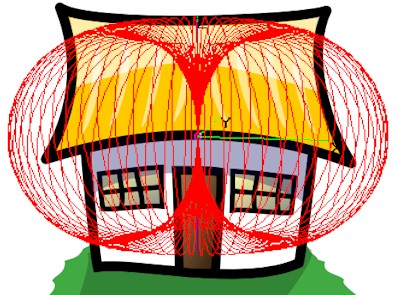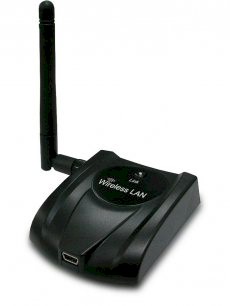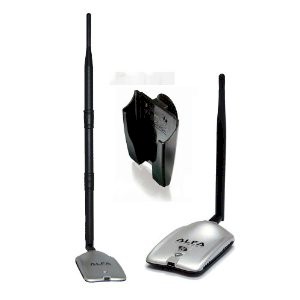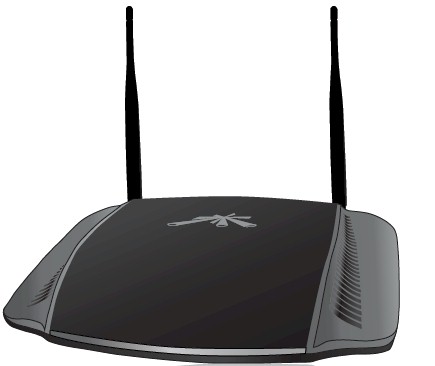Updated 6/26/2011 – Added dual-band USB adapter
People tend to look to newer model wireless routers in hopes of wiping out the dead spots that exist in most homes. And manufacturers are happy to oblige, slipping words like Extreme (and its hipper Xtreme variant), Advanced, Maximum Performance, High Performance, Ultimate and RangeBooster into product names.
While they make for enticing box labeling, smarter shoppers might notice that those adjectives offer no hard data on the actual improvement they’ll provide. In fact, you’ll be hard-pressed to find a manufacturer today that will put any sort of hard performance information on a product box, spec sheet or user manual.

In an attempt to differentiate themselves from the weasel-word crowd, some manufacturers have taken to describing their wireless products as "High Power". Buffalo glommed onto this awhile back with its High Power line of routers. And Engenius has for many years featured high power and "extended range" routers and adapters in its product line.
The nice thing about claiming high(er) power is that it can easily and reliably be measured and verified. In fact, maximum power measurement is required for FCC certification, to ensure that products don’t exceed mandated limits. So there is no worry about being sued for false claims (one reason why manufacturers stopped specifying range performance).
Unfortunately, simply swapping out your current router for a high(er) power usually doesn’t help increase your wireless coverage. The 802.11 standards that all Wi-Fi networks are built on use a "positive acknowledgement" protocol. That means each data packet (or frame) that is sent must be acknowledged by the receiver via a reply back to the sender. If no acknowledgement is received, the sender will try again and again until a timeout is reached and the sender gives up and drops the connection.
So when you increase the power on a wireless router or access point (AP), all this does is make it "shout louder". Sure, a wireless notebook in a dead zone may now be able to "hear" the router, where it couldn’t before. But unless the client can shout just as loudly back, the client won’t be able to communicate with the AP and the connection will be dropped or won’t be made at all..
There are two solutions to this problem: increase antenna gain; or also boost the signal on the client end. Boosting transmit power on both ends of the connection can get expensive and impractical if you have a lot of clients. I don’t recommend it as a way to improve coverage. But it’s certainly the way to go if you’re trying to link two buildings together via wireless.
Increasing antenna gain gives you more flexibility because you can do it on the router / AP, or client or both. A higher gain antenna can succeed where higher power doesn’t because it amplifies both the transmitted and received signals.
So you can install higher-gain antennas on your router / AP, leave the clients as-is and see real results. Of if you’ve got one computer with an iffy (or no) connection, swapping in an adapter that has more power, higher gain antennas or both can get ‘er done.
But you need to move up to an antenna with at least 6dBi gain to see a performance difference. And you’ll need to upgrade all the antennas on your AP / router to see any effect. Before you take the plunge, I recommend you read through How To Fix Your Wireless Network – Part 4: Antennas to learn the ins and outs.
Although harder to find, you can still get routers and access points with external connectorized antennas that you can swap for higher power ones. Check the Router and Wireless Finders and use the Antenna Upgradeable filter to find them.
Putting a higher gain antenna on a client is harder. You don’t really have an option with wireless adapters built into mobile devices. But if your device has a USB connector, there are some options out there. Engenius again tends to be the go-to for upgradeable antenna USB adapters.
The EUB9603H is only single-stream N, but has an RP-SMA connector so that you can add a higher gain antenna if you like. They also have the EUB9603 EXT in a more svelte style. Note these are 2.4 GHz single-band only. I don’t know of any dual-band adapters with upgradeable antennas. If you do, let me know and I’ll update the article.

EnGenius EUB9603H
Wireless N 150Mbps High Power 600mW USB Adapter with High Gain Detachable Antenna
Updated 6/26/2011
A helpful reader tipped me to the Alfa AWUS051NH. It’s a dual-band a/b/g/n adapter with 500 mW transmit power and 5 and 9 dBi omnidirectional antennas.

Alfa AWUS051NH
500mW High Gain 802.11a/b/g/n high power Wireless USB A / B / G / N Wireless WiFi Network adapter With a 5dBi and 9dBi Rubber Antenna and Suction cup / Clip Window Mount – High speed Up to 300 Mbps – With Hot Swap Support
For desktops or anything with an Ethernet connector, you can also use a wireless bridge, like the D-Link DAP-1522 or Cisco Linksys WET610N. These don’t really have higher-gain antennas. But the increased flexibility in placement can make the difference between getting and not getting a good connection.
If you want both higher power and the option of upgradeable antennas, then EnGenius has the ECB-9500 and ECB-3500, which can also be configured as access points and repeaters and have upgradeable antennas.
There is also Ubiquiti Networks’ Power AP N, which also can function as a bridge. A happy customer started this thread on the forums with his mini-review.

As with many things, the rule of "if a little is good more is better" does not always apply. As you increase gain, antennas usually become directional, which will degrade coverage in the areas that are "behind" the antenna. And remember higher gain antennas pick up more signal and more noise. So they may hurt performance if you are in an area with a lot of nearby networks.
The best way to improve wireless coverage is as the pros do: adding access points. But that deserves its own article.
